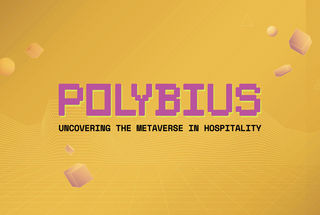Interoperability of metaverses - Eventual Convergence
From "Avatar" to "Wallet": the definitive metaverse glossary for dummies
Metaverse and Web3 in Hospitality — Viewpoint by Simone Puorto
Interoperability: Interoperability refers to the ability of different virtual environments, platforms, and technologies to work together seamlessly. This means that users should be able to move freely between different virtual worlds and experiencesin a seamless fashion.
NFTs: Non-fungible tokens (NFTs) are digital assets that are unique and cannot be replicated or replaced. In the context of the metaverse and interoperability, NFTs provide a way to represent and transfer ownership of virtual assets, such as virtual real estate, digital clothes(skins), digital game tools, digital art, and other virtual items.
NFTs help to facilitate interoperability by providing a common framework for representing and transferring ownership of these assets across different virtual worlds and platforms. This can make it easier for users to move and trade them to create a more cohesive and interconnected metaverse.
As an example:
Imagine that Alice and Bob are both users of the metaverse. Alice is a resident of Virtual World A, while Bob is a resident of Virtual World B. Alice and Bob have never met in person, but they have become friends through their shared interest in virtual world exploration.
One day, Alice and Bob decide to meet up in person for the first time at Virtual World C, which is a neutral ground where both of them have accounts.
In order for Alice and Bob to meet up in Virtual World C, the virtual worlds that they are currently residents of (Virtual World A and Virtual World B) must be interoperable with Virtual World C. This means that the systems and technologies behind each of these virtual worlds must be able to communicate with each other and exchange information.
When Alice and Bob arrive in Virtual World C, they are able to see each other's avatars, digital skins and interact with each other just as they would in any other virtual world. They are also able to access content and services in Virtual World C that they may not have been able to access in their own virtual worlds.
While, the initial focus of an interoperable metaverse will be on providing a seamless experience for consumers, it will also be important because consumers will want to know that they can retain the value of their virtual assets, such as virtual clothing and accessories, even if they switch to a different virtual platform. Additionally, interoperability will be important for generating sales and establishing a metaverse economy, as it will allow consumers to easily buy, sell, and trade virtual assets across different platforms. In an ideal scenario, virtual assets like the D&G jacket your avatar buys on one platform would be accessible and usable on another platform.

 by
by 

